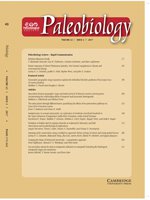Ediacaran fronds are key components of terminal-Proterozoic ecosystems. They represent one of the most widespread and common body forms ranging across all major Ediacaran fossil localities and time slices postdating the Gaskiers glaciation, but uncertainty over their phylogenetic affinities has led to uncertainty over issues of homology and functional morphology between and within organisms displaying this ecomorphology. Here we present the first large-scale, multigroup cladistic analysis of Ediacaran organisms, sampling 20 ingroup taxa with previously asserted affinities to the Arboreomorpha, Erniettomorpha, and Rangeomorpha. Using a newly derived morphological character matrix that incorporates multiple axes of potential phylogenetically informative data, including architectural, developmental, and structural qualities, we seek to illuminate the evolutionary history of these organisms. We find strong support for existing classification schema and devise apomorphy-based definitions for each of the three frondose clades examined here. Through a rigorous cladistic framework it is possible to discern the pattern of evolution within and between these clades, including the identification of homoplasies and functional constraints. This work both validates earlier studies of Ediacaran groups and accentuates instances in which previous assumptions of their natural history are uninformative.
How to translate text using browser tools
7 March 2017
Relating Ediacaran Fronds
T. Alexander Dececchi,
Guy M. Narbonne,
Carolyn Greentree,
Marc Laflamme
ACCESS THE FULL ARTICLE

Paleobiology
Vol. 43 • No. 2
Spring 2017
Vol. 43 • No. 2
Spring 2017




